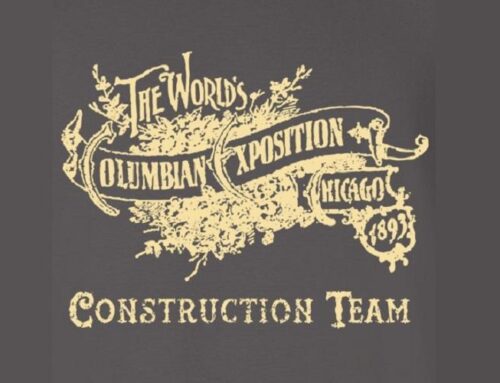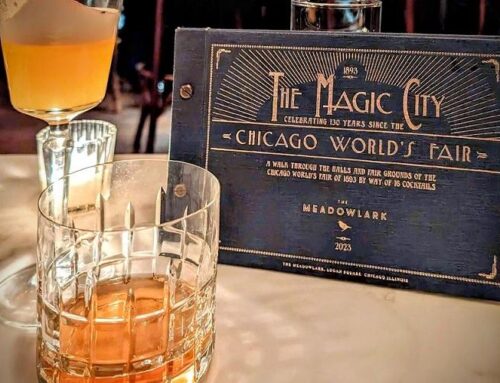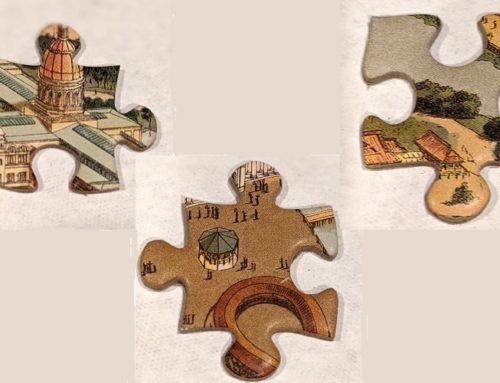
Chicago’s Lollapalooza Days: 1893-1934 by Jim Edwards. Arcadia Publishing, 2019. ISBN: 9781467103701. Softcover, 128 pages. $21.99.
Partying ruled in the years between Chicago’s two World’s Fairs, writes historian Jim Edwards in his introduction to Chicago’s Lollapalooza Days: 1893-1934. The collection of 169 annotated images form a loose theme around the titular “lollapalooza” (a ball in the notorious First Ward, not a modern music festival). Edwards curates a visual review of many of the characters, fetes, and vice that enlivened Chicago for the forty years between the Columbian Exposition and the Century of Progress.
Along the way can be found an interesting assortment of people associated with the 1893 Fair, but made more famous afterwards. Readers encounter “Little Egypt,” who belly-danced in downtown Chicago for years after her stint on the Midway, and composer John Powell, who paid tribute to the salacious dance in his song “Hoochee Coochee at the Fair.” Joining the revelry are Florenz Ziegfeld (Jr. and Sr.), who entertained Chicago during the Fair, and Harry Houdini, who had worked on the Midway before launching his career as a magician. Crashing the party are more than a few characters who seem out-of-place in a book about “lollapalooza,” including killer H. H. Holmes and his infamous murder castle in Englewood near the fairgrounds and social reformer W. T. Stead, whose visit the 1893 Fair and its host city prompted his writing the anti-vice exposé, If Christ Came to Chicago.
Chapter Seven is devoted to Chicago’s two world’s fairs and features Midway manager Sol Bloom, the Palace of Fine Arts, and the Columbus caravels—but, again, the images are each from long after the end of the Fair. The chapter also includes the Women’s [sic] Building, pianist Ignacy Paderewski, and pancake advertiser “Aunt Jemima,” but lacks convincing explanations of how they connect to the stated theme of this volume. Many other truly festive aspects of the 1893 World’s Fair did not make the cut: the Ferris Wheel, the International Ball on the Midway, Bertha Palmer’s dinner party for the Infanta Eulalia, Chicago Day, the Moorish Palace fun house, and much more.
Two glaring errors should have been caught during proofing. A photograph captioned “Central Music Hall” (p. 61) is instead a vista of several of the state buildings from the fairgrounds, and a photograph described as the “Grand Entrance” to the Midway Plaisance (p. 101) is actually of the White City amusement park (described only a few pages later, making the mistake surprising.)
Despite the errors and rather loose theme, the collection should interest Chicago history buffs, and Columbian Exposition enthusiasts could find room on their bookshelves for the slim volume of salmagundi from the Fair.

The lollapalooza of the Opening Ceremonies the 1893 World’s Fair.





Leave A Comment